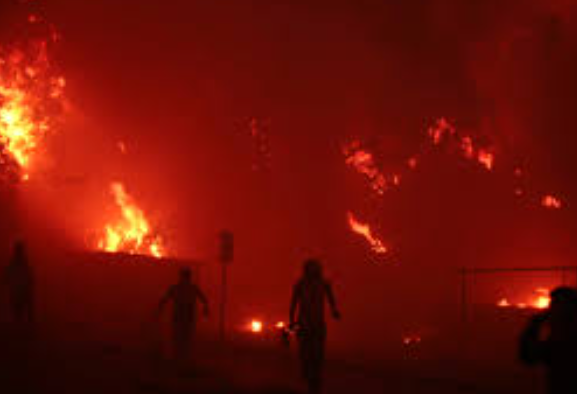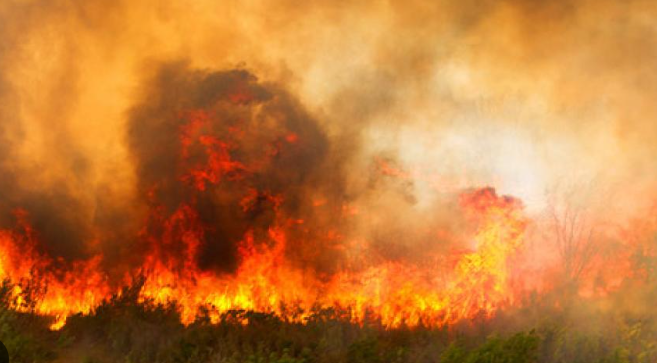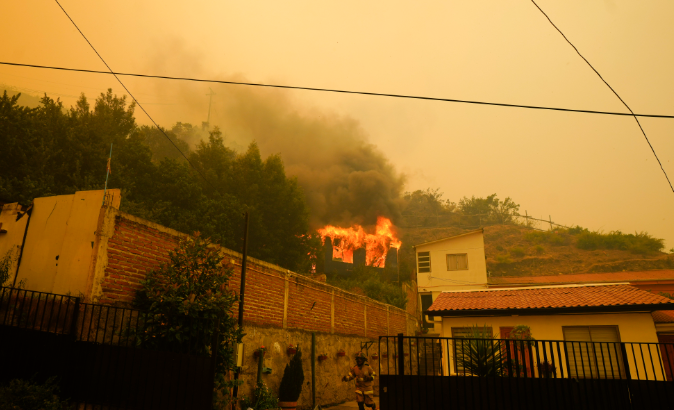
Central Chile Gripped by Massive Forest Fire, Claiming 46 Lives with Mounting Toll Expected
Central Chile: Death Toll Soars to 46 with Grim Expectations
The picturesque Valparaiso region of central Chile has been shrouded in darkness as billows of black smoke engulf the sky, a grim reminder of the devastation wrought by raging forest fires. President Gabriel Boric delivered the sobering news on Saturday, confirming the loss of at least 46 lives, with fears mounting that the death toll could escalate further.
The heart-wrenching scenes unfolding in Valparaiso have gripped the nation, as firefighters, equipped with helicopters and trucks, battle tirelessly to contain the inferno. Despite their heroic efforts, the flames continue to ravage vast swathes of land, leaving behind a trail of destruction and despair.

The coastal oasis of Vina del Mar, renowned for its scenic beauty, has borne the brunt of the catastrophe, its idyllic surroundings transformed into a landscape of desolation. Rescue teams, faced with daunting challenges, struggle to reach all affected areas, their efforts hampered by the ferocity of the fires and the treacherous terrain.
President Boric, in a somber address to the nation, delivered the grim statistics: 40 lives lost in the flames, with an additional six succumbing to their injuries in hospitals. With a heavy heart, he acknowledged the inevitability of further casualties as the full extent of the tragedy unfolds.

“The situation is really very difficult,” Boric lamented, echoing the sentiments of a nation grappling with grief and disbelief. This latest outbreak of forest fires marks the deadliest in central Chile in the past decade, according to the Chilean disaster agency, Senapred, underscoring the severity of the crisis.
Interior Minister Carolina Toha provided further insight into the scale of the disaster, revealing that 92 active fires were raging across the country, leaving over 43,000 hectares ravaged by the inferno. The rapid escalation of the crisis, she noted, was particularly alarming, with the hectares affected multiplying at an alarming rate.
While wildfires are not uncommon in central Chile during the summer months, the intensity and scale of this year’s blazes have caught many off guard. Last year’s record heat wave claimed 27 lives and devastated over 400,000 hectares of land, but the current crisis has surpassed even those grim statistics.
“The area with fires today is much smaller than last year, but the rate of expansion is unprecedented,” Minister Toha remarked, highlighting the alarming rate at which the fires continue to spread. Of greatest concern, she emphasized, was the encroachment of the flames upon urban areas, posing a dire threat to lives, homes, and infrastructure.
As central Chile confronts this unprecedented crisis, the resilience and unity of its people are put to the test. From the valiant efforts of firefighters battling the blaze to the solidarity of communities rallying together in support of those affected, the nation stands united in the face of adversity. Yet, as the flames rage on and the death toll mounts, the road to recovery will be long and arduous, marked by the indelible scars of loss and devastation.

In the aftermath of this calamity, questions loom over the factors that contributed to the severity of the fires and the adequacy of the response measures employed. While wildfires are a recurring phenomenon in central Chile , exacerbated by the dry, hot conditions typical of the summer months, the unprecedented scale and intensity of this year’s infernos raise concerns about underlying environmental, regulatory, and socio-economic factors.
Environmental degradation, including deforestation and land degradation, has been cited as a contributing factor to the increased susceptibility of Chilean landscapes to wildfires. The loss of natural vegetation, coupled with the expansion of urban areas into forested regions, has created conditions conducive to the rapid spread of fires and heightened the risk of human exposure to danger.
Furthermore, regulatory shortcomings and inadequate enforcement of fire prevention measures have exposed vulnerabilities in Chile’s disaster management framework. Despite previous incidents highlighting the need for robust fire prevention and response mechanisms, gaps in coordination, communication, and resource allocation persist, hindering the effectiveness of emergency response efforts.
Socio-economic disparities, exacerbated by urbanization and rural poverty, also play a role in exacerbating the impact of wildfires on vulnerable communities. Limited access to resources, infrastructure, and emergency services leaves marginalized populations disproportionately vulnerable to the ravages of natural disasters, deepening social inequalities and exacerbating the humanitarian toll of the crisis.
For the latest updates-click here.

